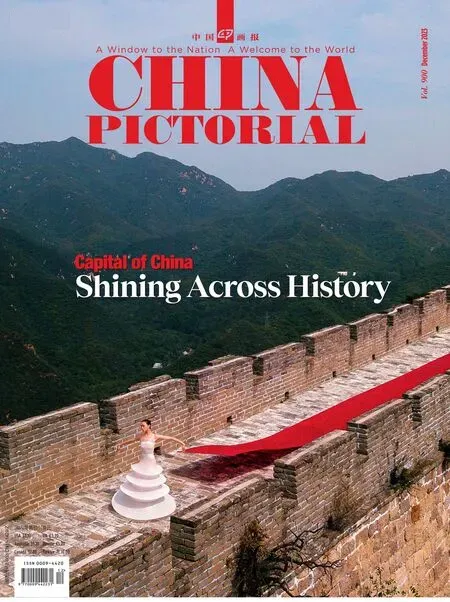Reviving Patriotic Genes
Text by Mo Qian
Captured in vintage pictures,relics,and buildings,the patriotic spirit of Beijing has cultivated the public in a quiet yet powerful fashion.
More than 100 years ago,the Red Building of Peking University became the earliest incubation of Marxism in China and a paramount stronghold of the early activities of the Communist Party of China (CPC).More than 70 years ago,Xiangshan(Fragrant Hills) became the first place where the CPC Central Committee settled in Beijing after it moved out of Xibaipo County,Hebei Province.In 1949,Chairman Mao Zedong solemnly announced to the world the founding of the People’s Republic of China from Tian’anmen Rostrum in downtown Beijing.
Beijing boasts rich and profound revolutionary heritage,bearing witness to a series of major historic events such as the spread of Marxism,the May Fourth Movement,the development of the CPC,the War of Resistance against Japanese Aggression,and the founding of the People’s Republic of China.Nowadays,the excavation and protection of local revolutionary heritage has injected vitality into the city.
Revolutionary Legacy
Tucked away at 24 Wenhua Alley in Beijing’s Xicheng District,the former residence of Li Dazhao,one of the founders of the CPC,is an inverted threesided courtyard covering an area of about 550 square meters.On the west side of the simple and serene residential building stands a solemn bronze bust of Li.More than a century ago,Li set out from there every day to work in the Red Building of Peking University.He and his family lived in this courtyard for nearly four years.
Captured in vintage pictures,relics,and buildings,the patriotic spirit of Beijing has cultivated the public in a quiet yet powerful fashion.In 2021,the former residence of Li Dazhao was included in Beijing’s first batch of revolutionary cultural relics because it witnessed how Li heralded the Chinese revolution in the early 20th century.Now,the architecture continues to help spread the history of how Li promoted Marxism,devoted himself to the founding of the CPC,led a series of strikes in northern China from 1922 to 1923,contributed to the first cooperation between the CPC and the Kuomintang,and more.
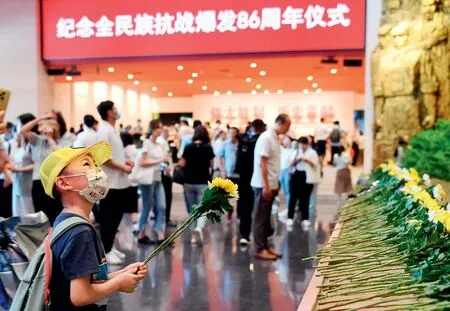
A child lays flowers at the Museum of the War of Chinese People’s Resistance Against Japanese Aggression in Beijing,July 7,2023.(Photo by Zhang Chenlin/Xinhua)
In recent years,Beijing,a city rich in revolutionary cultural relics and patriotic genes,has established three major cultural areas themed on the early revolutionary activities of the CPC,the War of Resistance against Japanese Aggression,and the founding of the People’s Republic of China,respectively,in line with its goal of contiguous thematic protection.Representative spots include the Red Building of Peking University,Wanping City by the Lugou Bridge,Shuangqing Villa,and Tian’anmen Square.
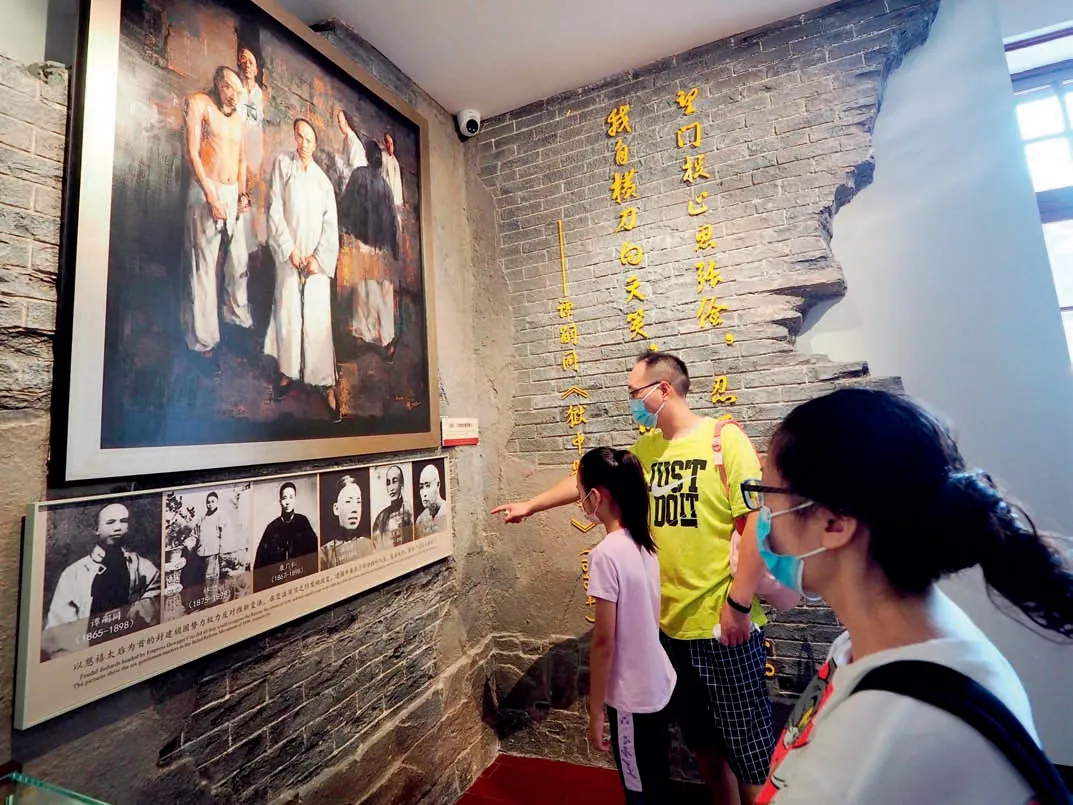
Visitors tour a patriotic exhibition at the Red Building of Peking University,August 3,2021.(Photo from VCG)
In 2021,to celebrate the 100th anniversary of the founding of the CPC,Beijing released its first batch of revolutionary cultural relics including 158 immovable cultural relics and 2,111 pieces (sets) of movable ones.In December 2022,the city published its second batch of revolutionary cultural relics,featuring 30 immovable cultural relics and 535 pieces (sets) of movable ones.
Representative spots include the Red Building of Peking University,Wanping City by the Lugou Bridge,Shuangqing Villa,and Tian’anmen Square.
Carrying Forward Patriotism
Based on detailed surveys of the protection status of historical sites,Beijing has categorized them with various improvement initiatives.Excavated and protected revolutionary sites are radiating the vibe of the new era.

A portrait of Li Dazhao.(Photo from CFB)
At the former site of Qinghuayuan Railway Station,the Yishou Hall of the Summer Palace,and the Xiangshan revolutionary memorial site,relevant historical landmarks have opened to the public.The former headquarters of the influential newspaperJing Bao,located in the Weiran Alley in Beijing’s Xicheng District,used to be a residential complex.After renovation,multiple special exhibitions are now on display there,illuminating how late journalists like Shao Piaoping practiced the patriotic spirit.The former site of the National Mongolian and Tibetan School attracts a steady stream of visitors with a daily dose of theatrical performances and intangible cultural heritage of ethnic minorities.The TV seriesAwakening Ageand the dramaThe Night at the FragrantHillshave also tugged at the heartstrings of younger viewers.
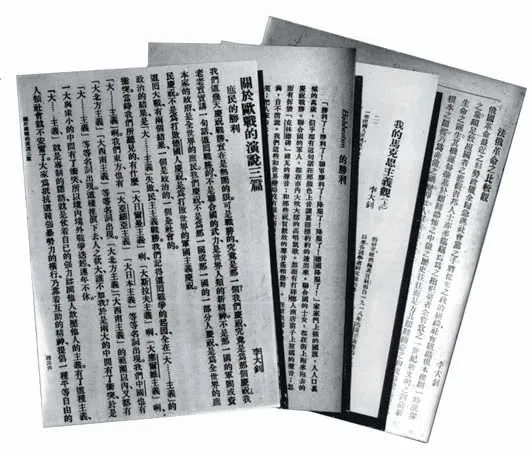
Li Dazhao’s works on the October Revolution of 1917 in Russia.(Photo from CFB)
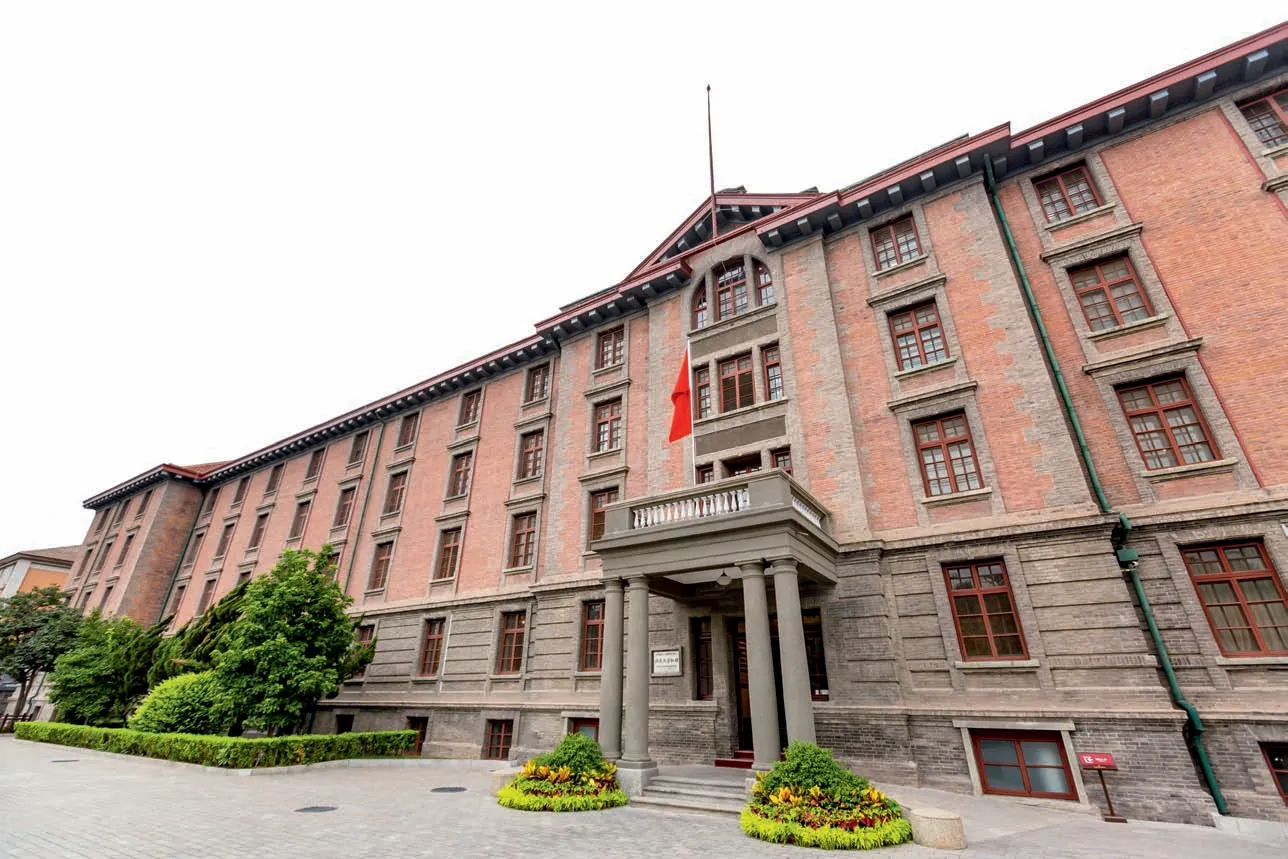
An exterior view of the Red Building of Peking University.(Photo from VCG)
In Beijing,every alley or building may very well have served patriotic purposes.When admiring the mottled remains of cultural relics,people are showing deep admiration for their revolutionary predecessors.

